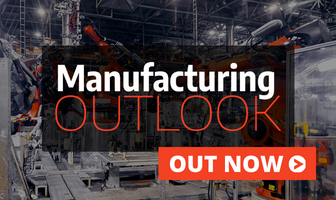Enterprise Resource Planning (ERP) is unlocking the key to delivering cost savings, improving business transaction efficiency and improving performance metrics.
Enterprise Resource Planning (ERP) solutions have gained significant ground over the past few years. Primarily driven by the COVID-19 pandemic and rapidly changing business expectations, ERP solutions have become more capable, accessible and resilient. They offer organisations the ability to pivot and adapt to uncertainty and complexity thanks to their integration of core business processes in real-time and ability to leverage intelligent toolkits and functionalities. And this is reflected in the statistics…
The ERP market is expected to exceed $49.5 billion by 2025, 50 percent of companies have made the acquisition of an ERP solution a priority and has proven results in terms of business value and return on investment as evidenced in the 2018 ERP Report. The TEC study also found that organisations willing to invest in their ERP implementation delivered cost savings in the region of 46 percent, improved business transaction efficiencies by around 40 percent, and improved performance metrics by up to 46 percent. In short, ERP has moved from a lumbering enterprise investment that costs time and money to a sleek performance enhancer that can measurably improve business growth.
“Investing into an ERP solution is not an easy decision to make,” says Ashley Ellington, Director at Times 3 Technologies, a Sage Platinum Partner. “The initial set-up costs are high and are often a shock for most companies, and the process of implementing an ERP solution properly is time consuming and complex. These investments of time and funds, however, will be repaid in measurable returns over time.”

One of the key ways in which an ERP solution will improve business growth and prove its worth lies in its ability to streamline and smooth over the bumps in the enterprise road. These bumps are the manual processes, less than optimal operational processes, the expensive errors incurred by poor visibility across multiple disparate systems, and the time spent consolidating information and insights from different silos and operations. With ERP, these manual, slow, and fiddly tasks become automated, digitised and accessible which reduces errors and introduces fresh and efficient ways of managing processes.
“You need to look at your ERP solution as an investment into a solution fabric,” says Ellington. “It’s every end of the business woven into a cohesive ecosystem that connects the dots, brings people and information together, optimises processes and methodologies, and allows for the organisation to become inherently more agile. Modern ERP solutions are also designed to be technology agnostic, responsive across multiple platforms and devices, and intuitive. They are far from the lumbering cumbersome behemoths of the past.”

“Modern ERP solutions are also designed to be technology agnostic, responsive across multiple platforms and devices, and intuitive. They are far from the lumbering cumbersome behemoths of the past”
Ashley Ellington, Director, Times 3 Technologies
Investing into an agile and capable ERP solution will also improve business performance by dint of its ability to streamline information sharing and data gathering. And it will help decision-makers to better manage their strategic planning with real-time reporting and insights. You can pivot to the customer at speed thanks to a system that’s capable of addressing the gaps in your business and providing you with reliable tools for communication and collaboration.
You can also customise your ERP solution to fit your needs. No one organisation is shaped the same as another, which means that no ERP solution should be shoved as a square peg into your round hole. It needs to be customised with the right add-on tools and approaches to ensure that it integrates smoothly within your business so it can actively drive growth and overcome legacy challenges. Whether you want to redefine billing and customer service or refine warehouse management or supply chain management, or any of the efficiencies in-between, your ERP should be able to step up and meet these expectations.Ultimately, your business can only benefit from focusing ERP as a strategic value-add and a powerful ally in embedding financial stability and driving growth. With Sage X3 – a leading ERP solution with a proven track record and extensive functionality – and Times 3 Technologies, a Sage X3 Platinum implementation partner, you can transform your Enterprise Resource Planning into an engine for growth.































